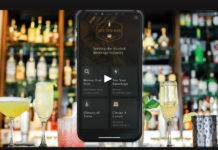
U.S. Drinks Conference Attracts Standing Room Only Crowd in NYC
New York, NY (October 21, 2009) — The third annual U.S. Drinks Conference, held October 13 and 14, moved from London to New York this year and expanded to two days to include a more diverse line-up of speakers covering a broader range of topics. Attendance more than doubled and led to standing room only crowds on both days.
The 2009 conference drew delegates from the U.S., Europe, South America and Asia interested in learning how to navigate the complexities of the US wine, spirits and beer markets from the three-tier system and regulation to distribution and consumer marketing issues. This year’s format included panel discussions and Q&A sessions led by some of the industry’s foremost authorities on the beverage alcohol business (see addendum for panel discussions and key note speaker list).
“The 2009 U.S. Drinks Conference was an overwhelming success,” noted organizer Steve Raye, Managing Director, Brand Action Team. “We structured the conference to focus on practical and useful information attendees could put to work immediately. Panelists perspectives ranged from large multinationals to independent entrepreneurs and they shared the valuable lessons they’ve learned on the street.” James Fellowes, CEO, The Alchemy Portfolio and former Diageo executive commented, “The 2009 US Drinks Conference was the most practical trade conference that I have been to in my 22 years in the Beverage Alcohol Industry.”
John Beaudette, President of MHW and conference organizer, commented, “Industry veterans got some valuable new information. The regulatory panel for example included industry counsel, TTB and state regulatory authorities who provided insights on processes and procedures that generated particular interest.”
While the U.S. economic news is still challenging, the overall tone of the conference was positive with recovery and opportunity at the center of the discussions. “The research we presented clearly shows that the beverage alcohol industry is recession-resilient,” said Mike Ginley of Next Level Marketing. “Certainly we’ve seen shifts in consumption from on-premise to off-premise and to less expensive brands and a shift to value, but overall, the industry is healthy and poised for potentially explosive growth as the economy continues to recover. For folks interested in introducing their brand to the US Market, now is the time to put the wheels in motion.”
The conference was developed and sponsored by Brand Action Team, Next Level Marketing and MHW Ltd. The 2010 US Drinks Conference will, once again, be held in New York City.
Click here for more information on the 2009 US Drinks Conference
________________________________________
A Note to Beverage Suppliers from On-Premise Operators
US Drinks Conference 2009 Session
“On-Premise Panel Discussion: Working with Bars and Restaurants at the National Account, Regional Chain and Independent Operator Levels'”

(Pictured, from left: Waterhouse, Grossich, Menafee, Kaiser)
Panelists
- Michael Waterhouse, Owner, Dylan Prime; President CEO, Drink Tank LTD
- Josh Kaiser, Partner, The Pink Elephant; Operations Director, Griffin NYC
- Mark Grossich, Owner & Chief Executive, Hospitality Holdings, Inc
On the second day of the US Drinks Conference supliers, exporters and brand executives of beer,wine and spirits were given the opportunity to hear directly from the owners and operators of some of New York City’s most successful and influential on-premise venues.
During the panel discussion moderator Denise Menafee, CEO, Menafee Consulting Group, inquired as to what elements factor into a bar or restuarant’s decision to welcome new brands or products into their beverage inventory.
- Issue: What criteria do you use for choosing the brands you will offer?
Kaiser: Owners need to identify what their brand is all about, what the ‘soul’ of their place is. You need to choose brands that are i alignment with your concept. Find at elast five brands that adhere to the image of your clientele.
Grossich: You need to know who your customer is before you try to sell them a product. You also need to know how well a particular product is moving in the current market. A great story about a product is great, but suppliers also need to tell us what they are going to do to help us sell that product. Sales support is key.
Waterhouse: Suppliers need to send in a salesperson with a that knows my place and what my customer is drinking. Backbar real estate is not what it used to be. Bar owners have to decide what is necessary and what isn’t.
- Issue: What can suppliers do to get your attention so that you take their call?
Waterhouse: It’s the introduction. We know enough sales people from the distributors who know know what they need to do. But we do pay attention to brands that appear in articles and who advertise.
Grossich: Suppliers need to introduce us to innovative and appropriate products.
Waterhouse: I speak with my distributor representative about four times a week, versus taking calls from the thousands of brand business cards I have piled on my desk.
- Issue: Are there any categories evolving or emerging that operators are looking out for?
Grossich: Gin.
Waterhouse: I agree with Gin, but I’m also blown away with the growth of Jameson. St. Germain and Canton and any other interesting, independent liqueurs.
- Issue: Do you look to suppliers for brand ambassadors to help your staff?
Kaiser: Absolutely not. By the time our doors open we are confident we know what we’re doing with these products.
Waterhouse: The problem is that the term”ambassador” is overused. An ambassador should be someone who can represent the brand well, who truly stand behind and know what the product is.
Grossich: Don’t send people in to sell a product to our customers. Let us use our existing staff to do that.
- Issue: Please provide some insight into what a supplier should do to properly introduce a new product.
Grossich: They need to continue to offer us and our customers new and innovative things that allow us to contiue to be on the cutting edge.
- Issue: How does you choose which wines will be featured on your wine list?
Waterhouse: Wine lists are chosen by quality. By the glass programs are very impotant, and the relationship you have with a wine salesperson is very important.
- Issue: What about beer?
Waterhouse: Typical American lagers are doing great, but the American palette has developed and now people are looking to try something different. Craft beers are important to know about.








